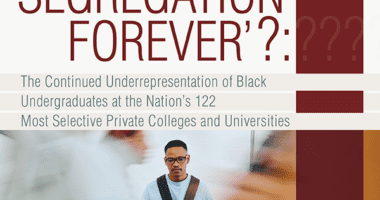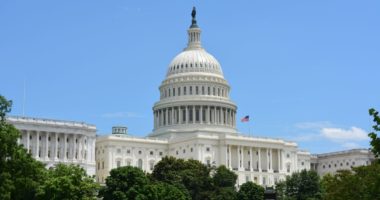Midterm report of Access to Success Initiative shows increases in both enrollment figures and degrees conferred, driven largely by low-income and minority students
Even as public investment in higher education dips dramatically in many states, the initiative’s goals are within reach, though much work remains
WASHINGTON (May 3, 2012) - Even before concerns about the economy focused national attention on lackluster college-attainment rates, a cadre of state public higher education systems leaders came together in 2007 to form the Access to Success Initiative. These leaders all members of the National Association of System Heads set about to use the power of systems to leverage change in order to meet two ambitious goals: increase the number of college graduates in their states and ensure those college graduates reflect the demographic makeup of their states high school graduates.
To meet these goals by the 2015-16 academic year, the 22 A2S participating systems have pledged to halve the gaps in both college-going and graduation that separate low-income students and students of color from others. The midterm report on A2S - Replenishing Opportunity in America - released today by The Education Trust, finds that, so far:
- Both enrollment figures and degrees conferred have increased, and improvements are driven largely by African-American, Latino, American-Indian and low-income students.
- At two-year colleges, there are no access gaps for low-income and minority students, relative to their representation among high school graduates in their states. At four-year institutions, the access gap for low-income freshmen has been cut in half, and it has closed for low-income transfer students. However, progress for students of color has not been as robust. Their access gaps at four-year campuses have narrowed by just one percentage point each for both freshmen and transfers.
- Success rates at two-year colleges remain low, and gaps persist. Four-year institutions have made gains, improving graduation rates for all students. But success among low-income students and students of color has not yet moved fast enough to begin closing the completion gaps.
Scroll to the bottom of the page to download the full report, three case studies, and the technical appendix.
To protect our democratic traditions, regain economic strength and meet the demands of our nations employers in the context of Americas rapidly changing demographics, we need to improve outcomes for low-income students and students of color. Unless we dramatically expand the pool of graduates, researchers estimate that the U.S. economy will be short about 3 million college-educated workers in 2018.
But we have a long way to go. By age 24, a student from a wealthy family is seven times more likely than the child of low-income parents to earn a bachelor’s degree. And the gap in college attainment rates between white students and students of color is bigger now than it was in the 1970s.
”About half of our K-12 students are low-income, and nearly 40 percent are black, Latino or American Indian,” said José Cruz, vice president of higher education policy and practice at The Education Trust. ”We may tell ourselves that America is the land of opportunity, but we’ve been rationing college opportunity for generations. This rationing feeds income inequality and hinders social mobility. So its both an economic and a moral imperative for colleges themselves to take responsibility and play a role in reversing these trends.”
Collectively, the 312 campuses in the A2S Initiative educate more than 3.5 million students, including 1 in 5 students attending Americas public colleges and nearly 40 percent of low-income students and students of color enrolled in public four-year institutions. So how well they perform is critical, not only to their respective states, but to the entire nation.
”For too long, most public colleges and universities havent served well the full range of young people in their states,” said Jennifer Engle, director of higher education research and policy at The Education Trust, and co-author of the report. “The A2S participants have taken responsibility for getting more students from underserved populations into and through college. We’d hope that every public college would demonstrate the same sort of commitment to fairness, collective prosperity and the security of our nations future that these systems have.”
Through the A2S Initiative, systems work together with their campuses and with the other systems to identify and find ways to remove institutional barriers to student success and by holding themselves publicly accountable to their gap-closing goals by submitting data annually to The Education Trust for analysis. Importantly, the A2S metrics capture data about the college-going and completion rates for transfer, part-time and low-income students, whose progress is rarely measured by publicly reported data collections.
Even as public investment in higher education has dipped dramatically in many states, this midterm report demonstrates that while much work remains the initiatives goals are within reach, with participating systems better positioned to contribute to our national college attainment goals than other institutions that are only beginning to respond to the economic and civic demands for more college graduates. Several preliminary lessons have emerged from top-improving campuses in A2S:
- Data drives effective improvement efforts. Staff and faculty at University of Wisconsin-Eau Claire examined their student data to better understand the factors they could influence that best correlate with on-time degree completion. For instance, students who earned at least 60 credits in their first two years were nearly four times more likely to graduate on time than those who did not. This process helped university leaders better target their intervention strategies, like providing additional support to students in courses with high failure, repeat and withdrawal rates. Since the initiative began, UW-Eau Claire has already halved its graduation rate gap between low-income freshmen and other students.
- Improved retention is not the sole purview of the student affairs staff. Instead, enhancing student learning is treated as key to increasing student success. San Diego State University began raising its expectations of students force-registering them into remedial and gateway courses, advising those registered for less than a full load to increase the number of classes they are taking, and engaging faculty in the implementation of high-impact practices while providing higher levels of support. Since 2005, graduation rates have improved for all students, but increased 22 percentage points among freshmen of color.
- Institutional habits of work, especially those related to shared governance, are harnessed to create change. Florida State University leverages a regular convening of representatives from departments across campus to review data, identify roadblocks to student retention and assign clear responsibility to team members for removing them. As former FSU provost Larry Abele said, If you pay attention, you will see leadership emerge at all levels to improve retention. Since the start of the A2S Initiative, FSU’s six-year graduation rate for minority freshmen has increased by 8 percentage points.
Public system leaders know that our countrys economic and social future depends on our ability to get more low-income and minority students both to and through college. Educational leaders have a responsibility to lead this agenda, and to create the room for creative people to come together to find solutions, said NASH president Kevin Reilly, who also is president of the University of Wisconsin System. The work is’nt done, but this example shows that together we can learn how to do this, and that change is possible.
(Take a look at the report cards for each institution participating in the Access to Success Initiative.)
# # #









